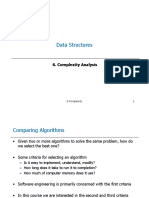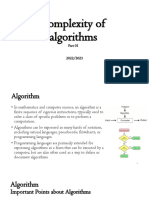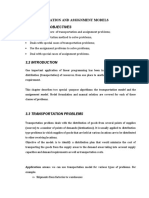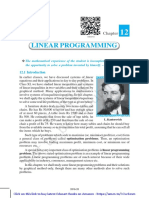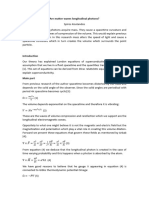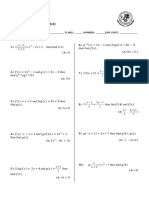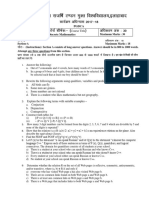0% found this document useful (0 votes)
47 views42 pagesLecture 2
This document discusses algorithm analysis and how to measure the efficiency and performance of algorithms. It explains that algorithm analysis studies the computing resource requirements of different algorithms, such as running time and memory usage. The goal is to analyze algorithms to predict performance, compare algorithms, and understand theoretical performance. The document discusses empirical testing versus theoretical asymptotic analysis and why theoretical analysis is preferred. It provides examples of counting the basic operations of algorithms to determine their time complexity functions in terms of input size n. Finally, it discusses analyzing best case, worst case, and average case performance.
Uploaded by
sami damtewCopyright
© © All Rights Reserved
We take content rights seriously. If you suspect this is your content, claim it here.
Available Formats
Download as PDF, TXT or read online on Scribd
0% found this document useful (0 votes)
47 views42 pagesLecture 2
This document discusses algorithm analysis and how to measure the efficiency and performance of algorithms. It explains that algorithm analysis studies the computing resource requirements of different algorithms, such as running time and memory usage. The goal is to analyze algorithms to predict performance, compare algorithms, and understand theoretical performance. The document discusses empirical testing versus theoretical asymptotic analysis and why theoretical analysis is preferred. It provides examples of counting the basic operations of algorithms to determine their time complexity functions in terms of input size n. Finally, it discusses analyzing best case, worst case, and average case performance.
Uploaded by
sami damtewCopyright
© © All Rights Reserved
We take content rights seriously. If you suspect this is your content, claim it here.
Available Formats
Download as PDF, TXT or read online on Scribd
/ 42






